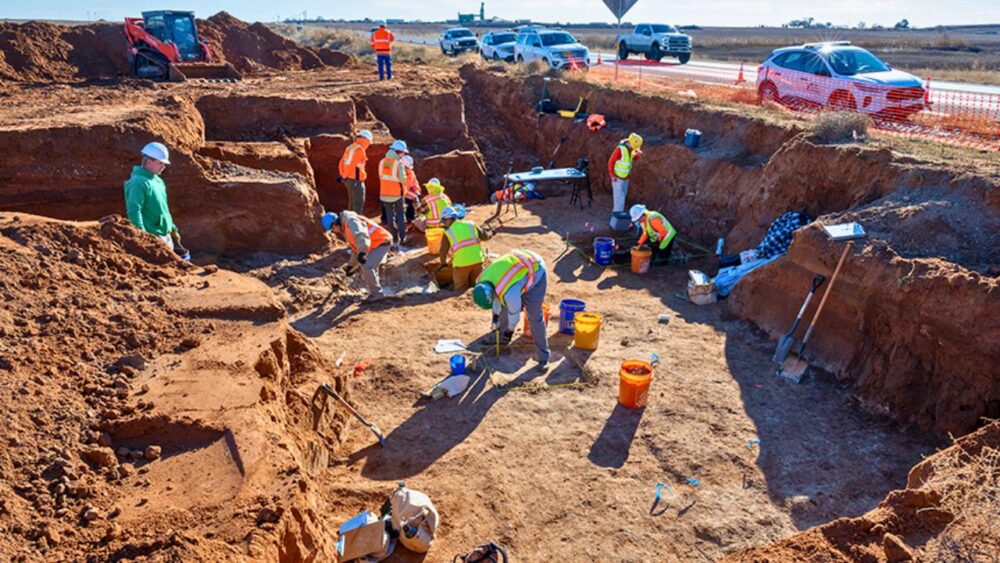The Texas Department of Transportation (TxDOT) has unearthed bones of large prehistoric animals, described as “colossal creatures,” during an archaeological survey for the Loop 88 freeway project in the Texas Panhandle.
The discovery, made during an environmental review for the proposed state highway, included remains of megafauna, large mammals from the Ice Age.
Chris Ringstaff, a project planner with TxDOT’s environmental affairs division, confirmed that at least one giant ground sloth was identified by “its distinctive tooth.” Paleontologists at the Museum of Texas Tech University are still studying other bones to determine whether they belong to the same species or others, such as mammoths or mastodons.
“Whether all the bones are giant ground sloth or there are different animals, such as mammoth or mastodon, we’re not sure,” Ringstaff said. “Paleontologists will give us positive identification.”
The survey was conducted because the Texas Panhandle’s playas — dried-out lakes from the Ice Age — sometimes contain evidence of prehistoric human and animal activity. Archaeologists employed staged mitigation to search for human artifacts, such as chipped stone or spear points, but none have been found.
“During the environmental review for Loop 88, TxDOT contracted an archeological survey. They found the bones of some large, prehistoric animals called megafauna, which is not unusual in the region,” Ringstaff said. “If the site involves humans, we have to address road construction impacts under state and federal law. If the site has no artifacts and dates to a time well before humans, TxDOT will recommend no further work, and the project can proceed to construction.”
Ringstaff added, “We’re here to get the road built. But who doesn’t love digging up big ol’ animals?”
The Loop 88 project aims to convert a 12.4-mile two-lane roadway into a six-lane freeway to reduce congestion, with construction planned in segments. If evidence of human activity is uncovered, the project could face delays due to complying with state and federal laws protecting historic sites.
“Should the site reveal human activity with megafauna from the Ice Age, it would be [the] first of its kind for a TxDOT project,” TxDOT noted in the press release.
“Excavation is one of many steps TxDOT can take prior to road construction to ensure that Texas history is preserved,” said Rebekah Dobrasko, TxDOT cultural resources section director.
TxDOT is collaborating with the Museum of Texas Tech University to identify and preserve the findings. Archaeologists continue to search for small artifacts and use dating techniques to determine the age of the remains.
The discovery follows other significant finds in the U.S., including a 13,000-year-old mastodon skull in Iowa last summer and a complete mastodon jaw in a New York backyard in 2024.


